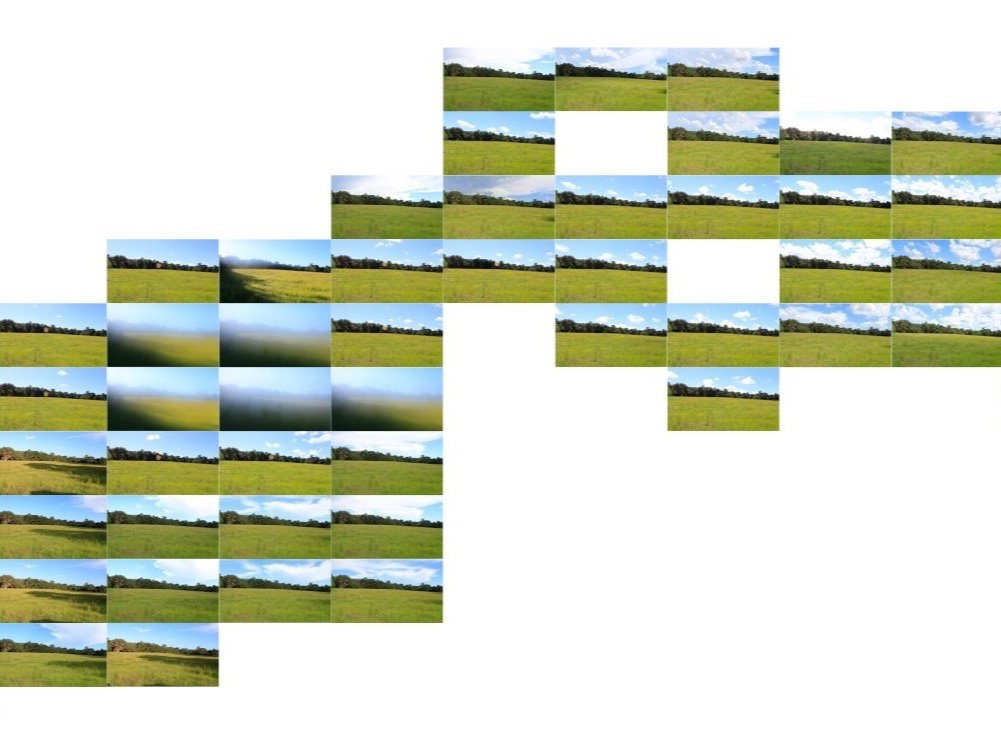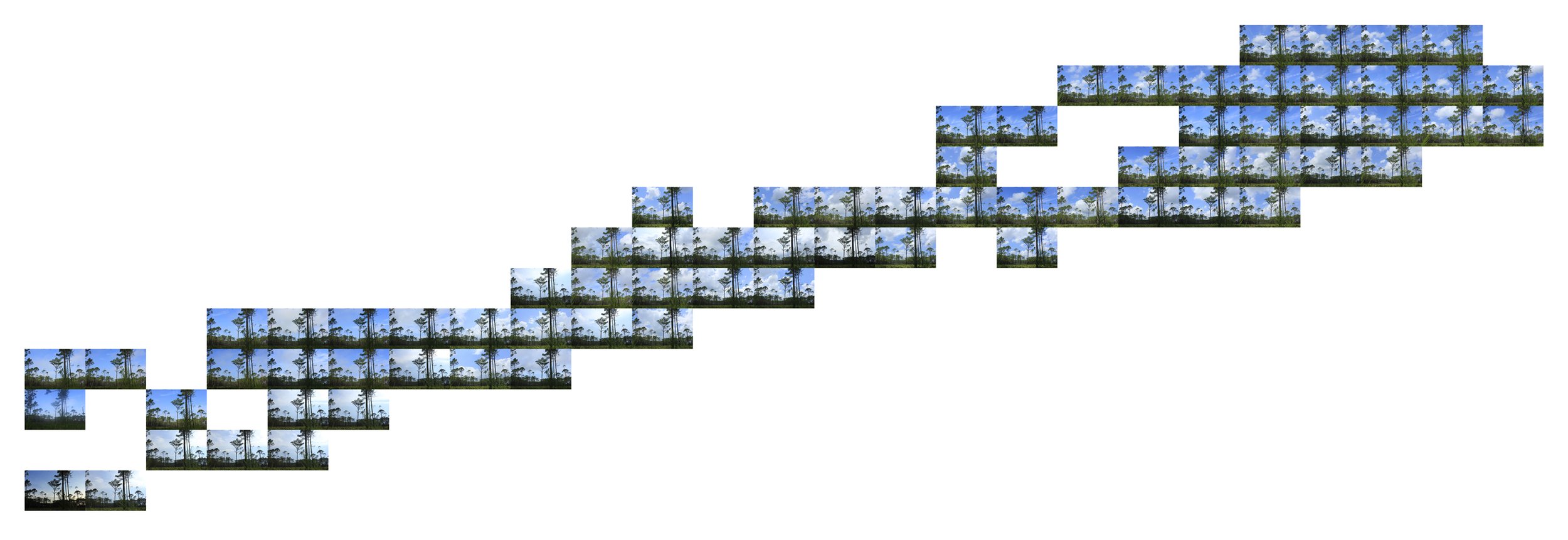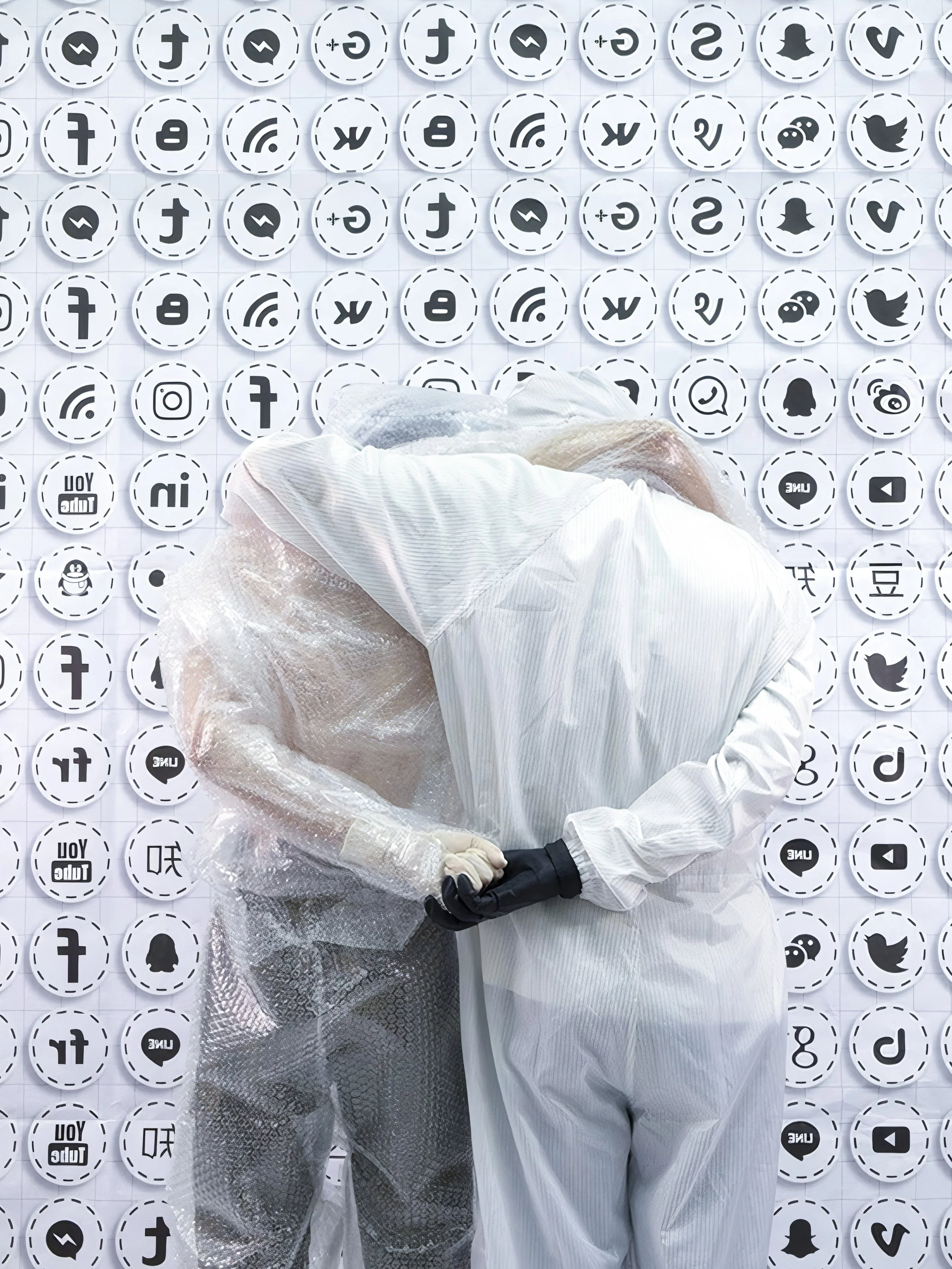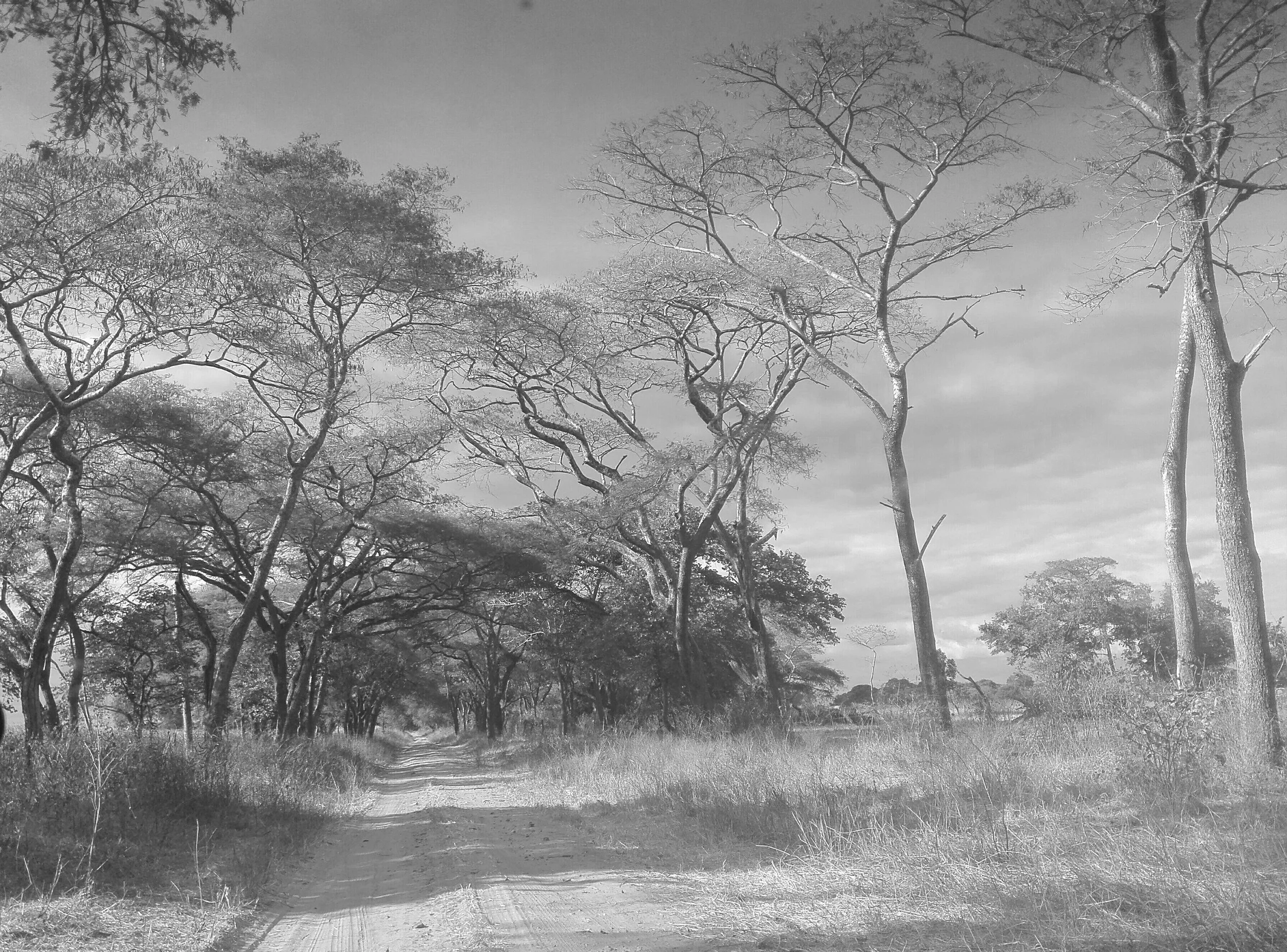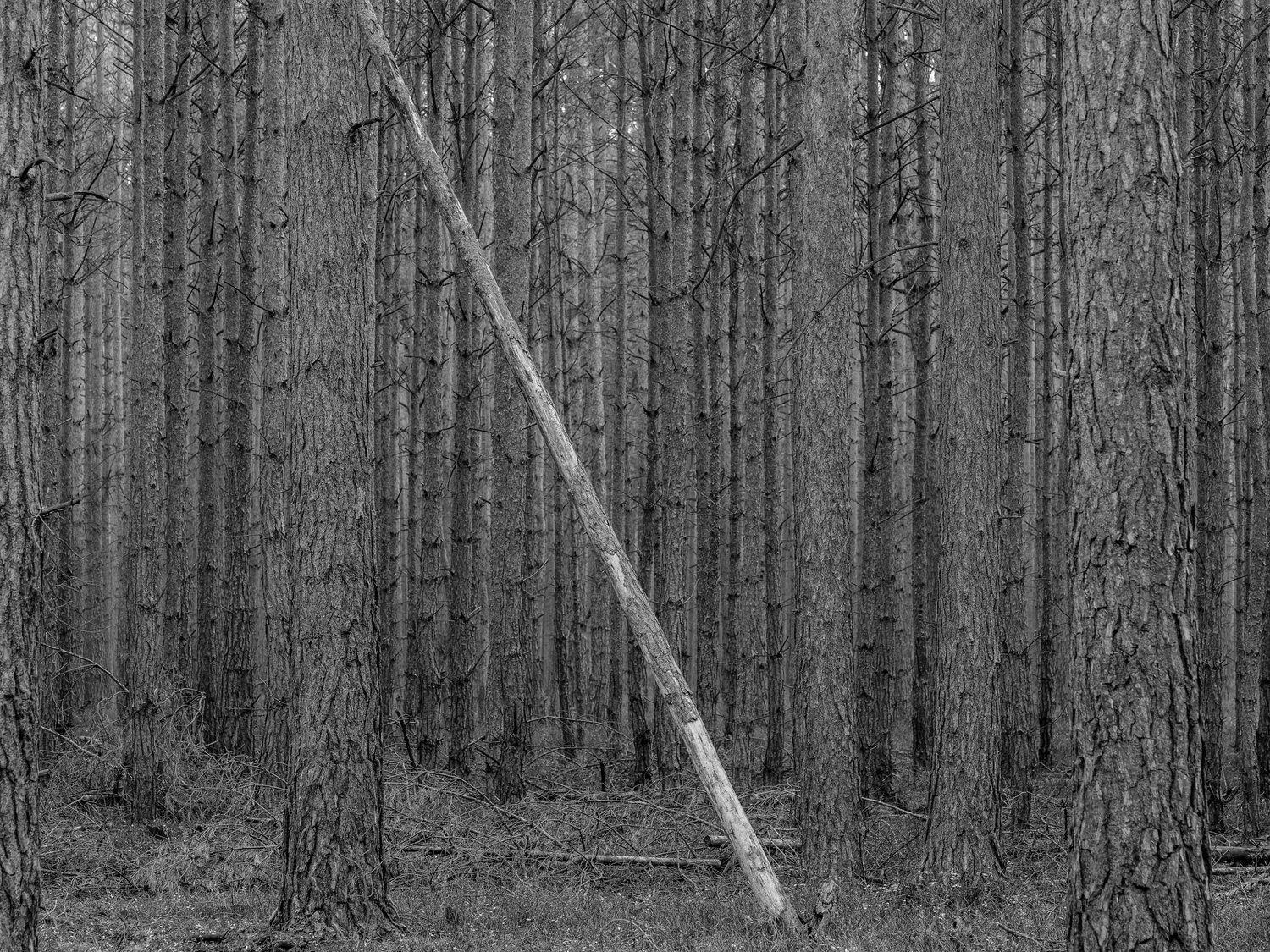10 Questions with Dawn Gaietto
Dawn Gaietto - Portrait
Dawn M Gaietto is a lens-based practitioner working and living in London. Her doctoral research, entitled What is happening here? [exploits of the nonhuman] was completed at the Slade School of Fine Art, University College London. Her research is centred on examining small components of nonhuman agency, allowing for momentary lapses in preconceived notions, and exploring the impacts of nonhumans acting upon and influencing humans. Recently she has been in residence at LABVERDE in Manaus, Brazil; and recent publications include Trace: Journal for Human-Animal Studies, Espacio Fronterizo, and Time to Waste. Recent exhibitions include the installation of a functional pigeon loft within a gallery space. This intervention allowed for a potential reconfiguring of viewership — creating new formulations of sustainability — both in the art-making practices and a wider practice of being-in-the-world.
Unfixed Consciousness/Positive Unconsciousness | Project Description
The images in Unfixed Consciousness/Positive Unconsciousness are manifestations of the collective agency between the mechanical, technological, and atmospheric elements as well as the artist’s as composer and interpreter. This was done by building an imaging device that triggers the shutter through changes in the temperature and humidity as detected by an SHT11x sensor that queried the environment once a minute. This device was deployed in several archetypical ecosystems throughout Alachua County for an eighteen-hour period, one day in each location. The measurements of temperature and humidity were selected as parameters for this project due to their relevance to shifting climate in North-Central Florida. As wetlands have been drained for development and agricultural uses, humidity is destabilised and lowered. This lowering of humidity allows for a greater fluctuation in temperature, therefore a shifting frost line, which then pushes agriculture, such as citrus farms, farther south. The locations selected for the images are all key archetypal ecosystems that contribute to modifying their local climates, which through the feedback loop the climate continues to modify the land. Here each serial image is constructed of a grid specific to the temperature and humidity variability of the day the images were captured. Each grid places temperature in degrees Celsius on the y-axis and humidity in percent on the x-axis.
This work draws from the historical lineage of landscape photography, particularly in the relationship of image-making and ownership inherent from the onset of landscape imagery, specifically in regard to European merchants in the late fifteenth century following the introduction of mathematical perspective and oil paints. This use of perspective introduced an ego-centrality to viewing that enhanced the transformation of space into place through picture-making.
Borrowing from Liz Wells, Dawn identifies space as an indeterminate expanse of the unknown and place being that which is named, imaged, and thereby owned. By creating a vertical topology of atmospheric forces, the serialised images abstract place, although the landscape is not returned to the position of space, through the activated collective agencies notions of ownership are resisted transforming into a non-place. This work explores the problem of anthropocentric positions in viewing environmental issues by vacillating between degrees of constructing situations and harnessing existing phenomena to create work in a way that does not provide preference to humans specifically in the context of environmental concerns.
Open Water Preservation Area in August, Digital photography with electronic intervention via Arduino microcontroller and SHT11x sensor, 112x264 cm, 2014 © Dawn Gaietto
INTERVIEW
Let’s start with your presentation. Tell us a bit about your background and studies. How did you start making art, and why did you decide to follow this path?
I grew up in Ohio before moving around the US quite a bit and then moved to the UK, completing my Ph.D. at the Slade School of Fine Art, University College London; and have been here since. I kind of fell into being an artist. I began studying photography and practiced photography professionally a bit before teaching at a community college. From this teaching position, I realised that I was much more interested in critical theory and the philosophies underpinning artistic practice than I was of photography as a professional activity. I don’t think I ever wanted to be an artist, so to speak, but I do have an artistic practice. My earliest memories of making art are centred around asking questions, “What am I doing here?” “What does this mean?” “What do others think when they see this?” The practice of questioning is still a primary undercurrent in my work.
I never felt that I made decisions about being an artist or lens-based practitioner, rather that paths were laid out before me. Making decisions has the implication that this was chosen against other options, but this is a path that has naturally unfolded. This has been an organic process without much intention on my part. I have never had a moment in which I’ve decided that I’m an artist. However, I can say that all of my artistic practice has been centred around the visibility of nonhumans. It is from this interest that my proposition for anthrodecentric art grew. I proposed anthrodecentric art to give viewers the opportunity to see, recognise, and acknowledge the existence of nonhuman agencies as my doctoral research. I proposed anthrodecentric art as a practice of art that neither creates nor reifies a position of privilege for the human actors, allowing them to occupy a central point or perspective; to aid in revealing the agency of nonhuman actants present in the materials, processes, and reception of art. As such, anthrodecentric art seeks to actively:
refuse positioning nonhumans as a resource for human consumption.
allow nonhuman agencies to be present in their own capacities.
allow room for nonhuman agencies to become visible to humans.
This research grew from the project Unfixed Consciousness/Postive Unconsciousness that is featured here.
Fresh Water Marsh in July, Digital photography with electronic intervention via Arduino microcontroller and SHT11x sensor, 112x239 cm, 2014 © Dawn Gaietto
How would you define yourself as an artist? And what are the main themes you wish to tackle with your work?
Being labelled an artist is an extension of how I’ve moved through my professional and creative life, but is not a label I would choose for myself; I am a lens-based practitioner. I do not subscribe to the ethos of ‘being an artist’, but I move through the world in a particular way and work through means of visual communication. I reject the label of artist given the historical framing of the genius-male artist and the patriarchal umbrella of art history.
The main themes in my work are ecology, ethics and feminism. Again, I make work as a practice of asking questions, not seeking to create nor provide any answers. Largely my work centres on questions of how I as a human am a part of the larger ecological systems in which I exist and how does an artistic practice help myself and others to understand these complex and intricate relationships.
To return to my research, anthrodecentric art strives to recognise the limits of human knowledge, for the viewer to acknowledge the unknown, and perhaps even accept ambiguity. The ethics of recognition, a guiding force within this research, begins with an acceptance; the acceptance of the fictive state we (most likely) inhabit. The fictive state to which I am referring is that of a Cartesian state of mind. This state is filled with abundant dualities and consistently places the human figure atop any and all conceivable hierarchies. While we may be in this state of mind, the other (the nonhuman in this case) is always present and remaining elusive. They are always looking. The human is, most likely, incapable of recognising this look. By inhabiting this state of un-recognising, we as humans are complicit in this fictive narrative and continuously render the nonhuman invisible. Although invisible, the nonhuman is omnipresent. These fictive systems have expanded from Cartesian perceptions to abstraction rendered through capitalist thinking via the subsequent loss of indexical relations. My research and creative practice explores the invisibility of nonhumans and nonhuman agencies, and the constructs which render them so. I am arguing that nonhuman agency is omnipresent and the invisibility is predicated on the perceptual framework of the viewer — and that this framework can be altered.
What do you wish the public could learn from your work? In other words, what messages would you like to convey?
I wish to provide access to ecologically orientated stances, to provide an opportunity to consider an ethical framework and way of being in the word with other humans and nonhumans. I try to explore the interconnectedness of ideas and or actions and reactions. I try to work towards expanding one’s awareness to the perspective of others, to explore the previously unconsidered position and to consider oneself in a different manner. My primary working methodology of non-Cartesian re-presentation is asking one to consider an ethical framework built upon movement, reciprocity and slippage. The proposition of anthrodecentric art relies upon the use of non-Cartesian representation (NCR) as methodology allowing for a state of re-enchantment to be achieved; then, to look at how the practice of art can reveal nonhuman agencies. In short, NCR will not reify the false binaries that pervade Cartesian thinking, and NCR will not be a practice of othering. This is a methodology that will enable looking, seeing, and being with another. The realm of NCR is vast, it encompasses any mode of representation that does not reify the human/nature binary.
One of your main focuses is the impact that humanity and human activities have on the planet and the environment. How did you get interested in such themes?
I live this life as a woman in 2022 and have watched the developments or lack thereof, I am only able to see the world through this lens. My work is based the ways I move through the world as I consider things and try to understand how things have become this way. The basis of who I am and how I interact with the world around me probably stems from my upbringing, I grew up in a rural environment and spent a lot of time isolated and observing the world around me. I think my work has largely developed from my observing interconnectedness that doesn’t seem obvious to others and working out ways to communicate this sense of interconnectedness.
Oak Hammock in August, Digital photography with electronic intervention via Arduino microcontroller and SHT11x sensor, 112x323 cm, 2014 © Dawn Gaietto
Hay Field in July, Digital photography with electronic intervention via Arduino microcontroller and SHT11x sensor, 112x351 cm, 2014 © Dawn Gaietto
The series “Unfixed Consciousness/Positive Unconsciousness” analyzes the impact of human activities on the humidity levels and climate of North-Central Florida through a series of photographs. How did you choose the areas to photograph? And how did you come up with the idea for this project more in general?
This project began as an assignment for using Arduino technology. After stumbling around tech-based gadgets and fumbling through coding, I began to ask how the technology could mediate how I photograph landscape? How can time-based approaches to photography go beyond a time-lapse and begin to visualise atmospheric conditions and even perhaps the longer-time of micro-climate change? Alachua County, Florida was the perfect place for an intense investigation using this research methodology as the various micro-climates have been so severely impacted by the changes in surrounding lands for agricultural uses. I choose areas that were representative of the differing ecosystems that were happening in contemporary spaces of Alachua County.
With this series, you clearly demonstrate how our impact on climate and the environment ignites a vicious cycle. In your statement, you declare, “As wetlands have been drained for development and agricultural uses, humidity is destabilized and lowered. This lowering of humidity allows for a greater fluctuation in temperature, therefore a shifting frost line, which then pushes agriculture, such as citrus farms, farther south”. How much do you think we can do in our everyday life to reverse this process?
We know that a large percentage of waste produced comes from corporations. It may be great to ask the small percentage of individuals to reduce, reuse and recycle, but unless the corporations reform, this is quite a dire situation. We are interconnected and our choices are limited by the structures in which we operate. While I am a proponent of individual choices such as recycling and composting, the biggest impact we can have as individuals is to ask more of the government and of corporation; which involves voting proper and by your wallet.
Pasture in August, Digital photography with electronic intervention via Arduino microcontroller and SHT11x sensor, 112x229 cm, 2014 © Dawn Gaietto
Pasture in August (detail) © Dawn Gaietto
As consumers, we are often trapped between two extremes: on the one hand, big companies rely on greenwashing to make us believe they are taking care of the environment; on the other hand, we often hear catastrophic forecasts. Where do you stand in this regard? And what advice would you give to our readers?
This is a huge question and one which I feel wholly unqualified to answer. But, perhaps I can share some of the information I have taken in. One resource that I find providing answers and not just overwhelming problems is the Climate One podcast. For instance, the act of composting can be highly beneficial to your local areas by reducing the amount of methane producing waste that enters a landfill, while positively being used elsewhere - a great example of local collective action. Another huge concern would be eating meat. One can make a great positive contribution by simply eating a plant-based diet or at least minimising the meat one consumes. If one is going to eat meat, consuming meat products that are free-range and not from a concentrated animal feeding operation or CAFO. From my understanding more meat, eggs and cheese could be produced from a pasture-based system than from CAFO, but it is really consumer choice or demand that will shape the actions of large producers.
In addition, investing provides a huge opportunity for one’s funds to make a positive impact regarding local and global issues; these options range from socially responsible investment to ESG rated funds through impact investing.
Over the past years, we have witnessed many changes in the art world and our lives in general. What is one thing that you miss about your life pre-Covid, and one new thing you discovered?
One thing I miss is regularly attending gallery openings, although this has been drastically improving of late.
One thing I discovered is different ways of working between in person and virtually. The freedom to work in a hybrid form has been very fruitful. I also look forward to seeing shifts in hybrid working and the changes in office/spatial allocation moving forward. I think this will open opportunities for space to be used in new ways and perhaps more equitably.
Sand Pine Scrub in July, Digital photography with electronic intervention via Arduino microcontroller and SHT11x sensor, 112x323 cm, 2014 © Dawn Gaietto
Threshold in August, Digital photography with electronic intervention via Arduino microcontroller and SHT11x sensor, 112x376 cm, 2014 © Dawn Gaietto
Did you participate in any online exhibition or event? And how did you stay active and engaged with the art community?
My role during the pandemic became much more passive than active, which was of course frustrating but offered a much needed break for reflection and consideration. After this period of reflection and considering different directions for my involvement, I have been able to refocus and aim my energies in the directions which have the most meaning for me. I maintained a slower or reduced level of engagement which allowed me to focus on those deeper connections and authentic moments to consider future working relations.
Finally, what are your plans for the future? Any new projects or exhibitions you want to tell us about?
I am currently working on two primary projects. The first is the launch of my business, The Art of Co-species Living. This business stems from my past projects of constructing habitats for feral and domesticated animals. I am working to build bespoke architecturally-integrated pet beds, for more information please visit https://www.theartofco-speciesliving.life/. Secondly, I am working with Dr Nir Segal on a collaboration based upon our shared birthday and the intersections of our lives before we actually met at the Slade School of Fine Art when we began our PhD course together. We will be tracing the pivotal events and dates in our lives as the basic framework for research around shared experiences and the politics of life driving our collision course to the intersection of our lives. We are particularly focussing upon our parallel timelines and moments of synchronicity, providing visibility to the gaps and overlaps in our lives growing up in the United States and Israel before ultimately crossing paths and living in the United Kingdom. This will be a methodology grounded in the research of coincidence, synchronic and the practice of making meaning.








